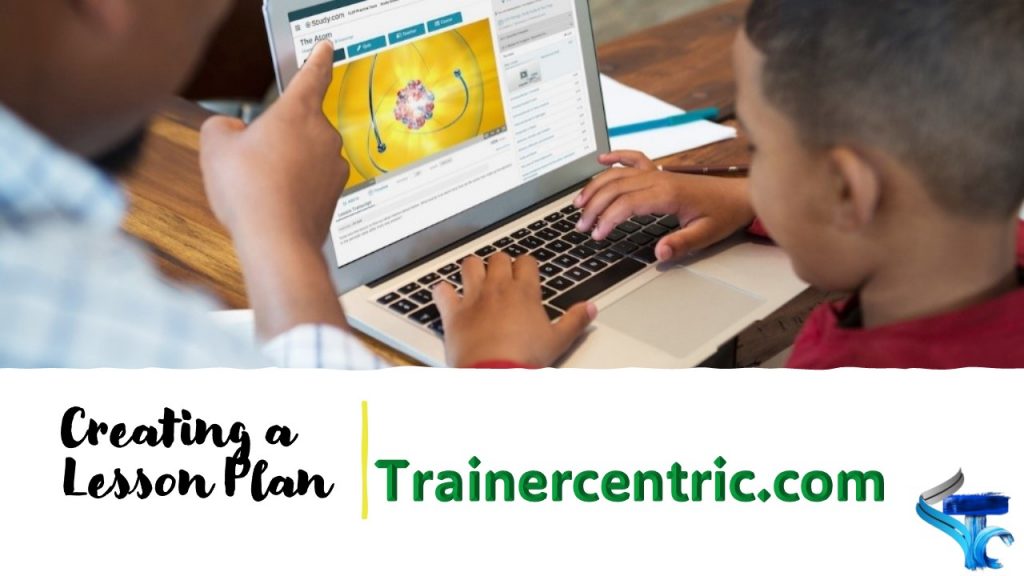
Creating an effective lesson plan is a cornerstone of successful teaching. Whether you’re an experienced educator or new to the profession, having a well-structured lesson plan can greatly enhance the learning experience for your students. In this article, we’ll explore the essential steps to craft the perfect lesson plan that engages students, achieves learning objectives, and promotes a dynamic classroom environment.
What is a Lesson Plan?
A session plan is a structured outline or guide that educators use to organise and deliver a successful teaching session. It serves as a road map for a specific instructional period, detailing the objectives, content, teaching strategies, assessment methods, and resources to be used during the lesson.
In essence, a session plan acts as a blueprint for effective teaching. It outlines the learning goals teachers aim to achieve, the sequence of activities to be conducted, and the methods employed to engage students and facilitate their understanding of the subject matter.
A well-crafted session plan takes into account the students’ learning styles, abilities, and prior knowledge. It allows teachers to anticipate potential challenges and adapt their approach to ensure that all students have the opportunity to grasp the concepts being taught.
Who Introduced Lesson Plan into Corporate Training
The introduction of lesson plans in corporate training doesn’t have a single specific individual attributed to it. Lesson planning in corporate training has evolved over time as part of effective training methodologies. Various training experts, educators, and instructional designers have contributed to the development and implementation of structured training plans, including session plans, in the corporate context.
These plans are designed to ensure organised and effective delivery of training content, promote engagement, and achieve learning objectives for employees within organisations.
Formats of Lesson Plans:
Lesson plans come in various formats, but they generally include essential components such as:
- Learning Objectives: Clearly defined goals that outline what students are expected to learn by the end of the lesson.
- Introduction: Engaging activities or strategies used to capture students’ attention and introduce the topic of the lesson.
- Content Delivery: The main body of the lesson where teachers present the subject matter using various instructional methods.
- Activities and Interaction: Hands-on activities, group discussions, and interactive exercises that encourage active participation and deeper understanding.
- Assessment and Evaluation: Strategies to measure students’ comprehension and progress, such as quizzes, assignments, or discussions.
- Conclusion and Closure: Summarizing the key points covered in the lesson and reinforcing the main takeaways.
- Homework and Follow-up: Assignments or tasks for students to complete independently to reinforce the concepts learned.
- Resources and Materials: List of materials, textbooks, multimedia, and any other resources needed for the lesson.
By meticulously planning each element, educators can create a structured and engaging learning experience that maximizes students’ understanding and retention of the subject matter. Lesson plans are essential tools that facilitate effective teaching and contribute to the overall success of the educational process.
Understanding the Need to Create the Lesson Plan
Creating a lesson plan is a fundamental aspect of successful teaching. Whether you’re a seasoned educator or new to the field, a well-structured lesson plan can significantly enhance the learning journey for your students. In this article, we’ll delve into the critical steps for crafting the perfect lesson plan – one that not only captivates students but also accomplishes learning objectives while fostering a dynamic classroom atmosphere. Here are the Benefits of a Well-Designed Lesson Plan:
- Engagement: By incorporating interactive and engaging activities, a lesson plan captures students’ interest, holding their attention throughout the learning process.
- Structure and Organization: A lesson plan provides a structured framework for teachers to follow during the instructional session. It outlines the sequence of activities, ensuring a logical flow that keeps both educators and students on track.
- Efficient Time Management: By allocating specific time slots for each activity, a lesson plan helps teachers manage time effectively. This prevents rushing through topics and ensures that all essential points are adequately covered.
- Clarity of Objectives: Clearly defined learning objectives serve as a compass for the lesson. Educators can focus their efforts on achieving these objectives, ensuring that students comprehend the core concepts.
- Enhanced Student Engagement: Incorporating interactive and engaging activities in the lesson plan captures students’ interest and participation. Engaged students are more likely to retain information and develop a deeper understanding of the subject matter.
- Adaptability and Flexibility: While lesson plans provide structure, they also allow for adaptability. Educators can modify activities based on students’ responses and needs, ensuring a customized learning experience.
- Assessment Alignment: A well-constructed lesson plan aligns assessments with learning objectives. This facilitates accurate evaluation of students’ understanding and helps educators determine if instructional goals have been met.
- Inclusive Teaching: Lesson plans can be tailored to accommodate diverse learning styles and abilities. Inclusive strategies ensure that all students, regardless of their background, can access and benefit from the lesson.
- Resource Management: Planning ahead for necessary materials, resources, and technology prevents last-minute scrambling and ensures a smooth classroom experience.
- Reflection and Improvement: After each lesson, educators can reflect on the effectiveness of their plan. This self-evaluation enables continuous improvement and refinement of teaching strategies.
- Consistency: For educators working in teams or substituting for one another, a detailed lesson plan ensures consistency in content delivery and teaching approaches.
- Student Empowerment: Clearly communicated objectives and activities empower students to take ownership of their learning. They know what is expected and can actively engage in the process.
- Holistic Learning Experience: Lesson plans facilitate a holistic approach to education, integrating various learning dimensions such as cognitive, emotional, and social aspects.
Key Components of an Effective Lesson Plan
Crafting an effective lesson plan involves a thoughtful arrangement of essential components that guide the teaching process and ensure optimal learning outcomes. Here are the key components that constitute a well-structured lesson plan:
1. Learning Objectives
Clearly defined learning objectives serve as the foundation of the lesson plan. These objectives outline the specific knowledge, skills, or competencies that students are expected to acquire by the end of the lesson.
2. Introduction and Hook
The introduction sets the stage for the lesson by capturing students’ attention and generating interest. A compelling hook, such as an intriguing question or a captivating anecdote, engages students and piques their curiosity.
3. Content Delivery and Activities
This section outlines the main content of the lesson and the activities designed to convey that content. Activities can include lectures, group discussions, hands-on projects, multimedia presentations, and more.
4. Differentiation and Accommodation
Addressing the diverse needs of students is crucial. Differentiation strategies ensure that learners with varying abilities and learning styles are appropriately engaged and supported.
5. Assessment Methods
Assessment methods are integrated to measure students’ understanding and progress. Both formative assessments (ongoing checks) and summative assessments (final evaluation) should be included.
6. Closure
The closure summarizes the key points of the lesson, reinforces learning objectives, and connects the content to real-life applications. It provides a sense of completion to the lesson.
7. Homework and Extension Activities
Homework assignments and extension activities allow students to practice and explore the concepts further outside of the classroom. These tasks reinforce learning and encourage deeper engagement.
8. Materials and Resources
A list of materials and resources required for the lesson, including textbooks, handouts, technology, and any props, is included to ensure seamless execution.
9. Time Management
Allocating appropriate time for each component of the lesson prevents rushing and ensures that all activities are completed within the allotted timeframe.
10. Reflection and Adaptation
This component encourages educators to reflect on the effectiveness of the lesson plan after its implementation. Reflection informs future improvements and adjustments to teaching strategies.
Each of these components contributes to the overall structure and effectiveness of the lesson plan. By thoughtfully addressing these elements, educators create a comprehensive road map that promotes engaging, meaningful, and successful learning experiences for students.
Crafting the Lesson Plan Step by Step
Creating a well-structured lesson plan requires a systematic approach that encompasses various essential elements. Follow these steps to craft an effective lesson plan that engages students and achieves learning objectives:
- First, decide what you want students to learn.
- Then, start with something interesting to grab their attention.
- Break down the topic into parts and plan activities to explain each part.
- Think about different students and how to help everyone learn.
- Use quizzes or discussions to check what they understand.
- Wrap up by reminding them what they learned and give homework if needed.
- Make sure to have all the materials ready and keep track of time.
- Afterwards, think about what went well and what you can do better next time. That’s how you make a good lesson plan!
In conclusion, crafting a well-structured lesson plan is an essential tool for effective teaching. A thoughtfully designed lesson plan not only guides the teaching process but also enhances student engagement and learning outcomes. By setting clear objectives, incorporating engaging activities, and considering the diverse needs of students, educators can create a dynamic and enriching classroom experience. Regular reflection and adaptation ensure continuous improvement in teaching strategies. Ultimately, a robust lesson plan empowers both educators and students on their educational journey.

![The Power of Storytelling in Corporate Training: Igniting Success and Inspiring Growth [2023]](https://trainercentric.com/wp-content/uploads/2023/06/storytelling-1024x576.jpg)

